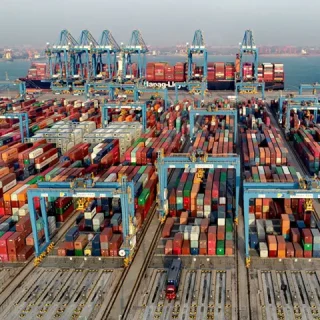This analysis delves into the dynamics of India’s Outward Foreign Direct Investment (OFDI) through the lens of an augmented gravity model paired with panel econometric methods. The study unravels how a combination of economic and non-economic elements steers the direction and magnitude of India’s international financial engagements. Notably, the country’s investments are skewed towards tax havens like Singapore, Mauritius, and the Netherlands, a trend attributed to the less robust institutional frameworks prevailing in both the originating and recipient nations. In place of marketable equity transactions, Indian investments are often channeled as non-marketable loans and guarantees. This strategy reflects a nuanced approach to overseas investment, shaped by a mesh of regulatory, economic, and strategic factors.
Analyzing Key Drivers of India’s Foreign Direct Investment: A Comprehensive Study
In the dynamic landscape of global economics, India’s role as an emerging market economy has been increasingly prominent, especially regarding its outward foreign direct investment (OFDI). This study, spearheaded by Mohd Hussain Kunroo and Imran Ahmad, delves into the multifaceted determinants driving India’s OFDI, utilizing an augmented gravity model and panel econometric approaches.
Overview of India’s OFDI Landscape
Over recent decades, the flow of foreign direct investments (FDIs) has been remarkable, both in terms of inflow and outflow, across developed and developing nations. India, in particular, has observed a steady increase in its OFDI since the 1990s, marking it as one of the most significant emerging economies in this regard. The World Investment Report (2022) underscores this trend, indicating a substantial rise in OFDI from developing regions, with India showcasing the highest growth rate among these nations between 1990 and 2021.
Methodology and Empirical Framework
The study employs an augmented gravity model alongside panel econometric methodologies to dissect the economic and non-economic factors influencing India’s OFDI between 2007 and 2020. The analysis pivots on economic indicators like national income, exchange rates, and trade openness, as well as non-economic elements, including institutional frameworks in both home and host countries.
Key Findings and Insights
A pivotal finding of the research is the significant concentration of India’s OFDI in tax haven countries such as Singapore, Mauritius, and the Netherlands. This trend is attributed to factors like political and economic stability, favorable monetary and fiscal policies, and robust infrastructure in these nations.
The study also sheds light on the nature of Indian investments abroad, revealing a tendency to substitute marketable equities with non-market financial instruments like loans and guarantees. This substitution reflects the strategic maneuvers of Indian enterprises in the global investment domain.
Impact on Host Economies
The paper addresses the impact of India’s OFDI on host economies, indicating a potential mismatch between the inflows of FDI and real economic activities in these nations. It suggests that such investment flows may facilitate tax avoidance and evasion, underscoring the need for stronger institutional frameworks and global cooperation to address these challenges.
Policy Implications
The findings of this study bear significant policy implications. For India, understanding the determinants of its OFDI is crucial for formulating strategies that align with national economic interests and global economic integration. The study advocates for policy reforms to harness the full potential of OFDI, emphasizing the need for economic stability, market accessibility, and investment in technology and infrastructure.










